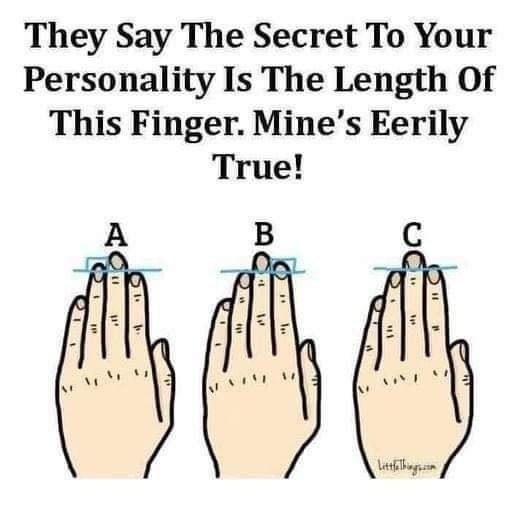Some people believe that the ratio between your index and ring fingers, known as the “digit ratio,” can provide interesting insights into personality. While most scientists view it as more of a curiosity than a proven fact, the idea fascinates many because it links something as simple as finger length to the complexity of human behavior.
The theory suggests that finger length may be influenced by hormone levels, particularly testosterone and estrogen, during early development. According to this belief, those with a longer ring finger than index finger (a lower 2D:4D ratio) are often described as confident, competitive, and drawn to leadership roles. Meanwhile, people with a longer index finger (a higher 2D:4D ratio) are thought to be empathetic, nurturing, and strong communicators—traits that may help them thrive in cooperative or supportive environments.
If the index and ring fingers are about the same length, it’s said to represent a balance of both qualities, blending assertiveness with compassion. The concept gained attention after evolutionary biologist John Manning introduced digit ratio studies to the public.
Of course, experts emphasize that personality is shaped by many factors—such as genetics, upbringing, and life experiences—not just finger length. Still, the digit ratio continues to capture popular interest, serving as a fun and lighthearted way to reflect on personal traits and tendencies.
